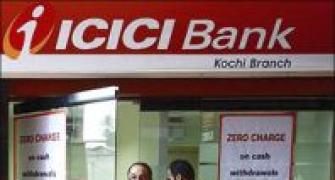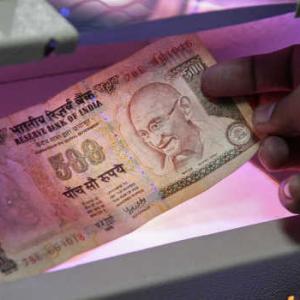The payment-bank model is potentially an important innovation, which will help increase last-mile capacity for and the efficiency of the financial inclusion process., says Subir Gokarn.

Many years ago, at an offsite that I participated in, I heard a message that has stayed with me since.
In a presentation, Rajendra Pawar, chairperson of NIIT, put up a transparency (it was that long ago!) that had the statement “the main thing is to keep the main thing the main thing”.
He attributed this principle to the late Philip Crosby, placing it in the context of quality standards that Crosby was associated with.
Clearly, however, the idea of relentless focus on the primary objective of the organisation gives it much wider applicability. It is this general relevance that has preserved it in my memory.
I want to use it as a lens through which to look at the recently issued guidelines for a new financial intermediation structure — the payment bank.
Over the past few years, financial inclusion has emerged as one of the key development initiatives, its importance immune to the change in government this year.
In terms of outcomes, the overall experience is, at best, mixed.
Large numbers of accounts have been opened, but a relatively large proportion of them is dormant.
The main reason for this is that accounts per se are not “products”; they are channels of delivery.
If the financial system does not have appropriate products available to address the needs of the newly included population, it should come as no surprise that the channels are not operational.
The next stage of the process, then, is to look for the right combinations of products and channels that achieve meaningful inclusion, that is, everybody who enters the system can find both a useful product and an efficient way to access it.
In the first phase of inclusion, while bank accounts have perhaps been the most visible manifestation of the programme, a number of different channels have emerged.
Business correspondents (BCs) have helped banks to cover the difficult last mile between themselves and the newly included.
Either as individuals or organisations, they are expected to significantly reduce the costs of delivery through a combination of structure and technology.
Microfinance institutions (MFIs), of course, have been around for a while and also partly work as last-mile bridges between the banks and customers.
Pre-paid instruments (PPIs) offer alternative channels for payments for transactions of remittances through the mobile network.
Telecom companies themselves also provide low-cost payment services using their networks.
The common feature of all of these models is that they have to fund their operations either from equity or borrowings from banks.
The next phase of the process would logically be to look for ways to combine the efficiencies that these various channels have achieved, or have the potential to, with low-cost funds.
This is, presumably, what a payment bank will be. It will accept deposits from the public, which will be fully covered by deposit insurance.
It will invest these deposits in government securities, completely risk-free, thus protecting them from any credit risk.
The deposit accounts can be used to receive all transfer payments from the government as well as any other inflows.
Since payment banks will be fully integrated into the national payment system, they can seamlessly transact with all other components of the system.
In short, welfare gains will accrue from the last-mile delivery channels, achieving lower costs.
Further, since the delivery channel is completely buffered from risk on both the liability (through deposit insurance) and asset (investment in government securities) sides, there is no risk premium required, either in raising funds or pricing other services.
So one would expect that all the current last-mile players, whatever their business models, would be eager to convert themselves into payment banks.
However, the stumbling block that they are likely to come up against is the rather high capital requirement of Rs 100 crore or Rs one billion.
The Reserve Bank of India has obviously decided to exercise extreme caution in setting this condition.
For comparison purposes, the minimum capital requirement to set up a full-fledged commercial bank, with all the risks that the business entails, is Rs 500 crore, according to extant licensing terms.
The Rs 100-crore threshold for payment banks would imply that, at the bottom end of the two categories, a payment bank is about one-fifth as risky as a commercial bank.
To me, this does not square with the virtually risk-free profiles of both liabilities and assets that the guidelines seek to create.
The more important point, though, is the one on which I would like to bring the “main thing” principle into the argument.
In implementing the inclusion agenda, I believe that it is important to put as much of the responsibility on entities for whom activities related to inclusion are indeed the “main thing”.
Whether they are doing it as pure commerce or out of altruism is entirely beside the point.
To the extent that their core business model and all the innovations that it has induced directly contribute to the achievement of meaningful inclusion, they must play a role in the next phase of the process.
This means that they must have the opportunity to move from their current financial and organisational structures to become payment banks.
Based on several interactions with these entities, I think that the Rs 100-crore threshold will prevent this from happening.
It is conceivable that organisations with unrelated or distantly related “main things” will find it attractive to set these new banks up, perhaps with investments above the floor.
But at such levels of activity, it is highly unlikely that the payment bank business would be their main thing, which raises questions about time and attention being given by senior leadership.
Speaking about telecom companies specifically, the restrictions that the guidelines impose on their use of their existing distribution networks go against the basic principle of leveraging existing capacity to develop new lines of business.
In short, I think that the payment-bank model is potentially an important innovation, which will help increase last-mile capacity for and the efficiency of the financial inclusion process.
This potential is more likely to be realised if entities’ core business interests are fully aligned with the inclusion objective, in terms of both products and delivery mechanisms.
In terms of the Crosby insight, entities whose “main thing” is financial inclusion are more likely to contribute to its achievement.
Subir Gokarn is director of research, Brookings India, and former deputy governor, RBI. These views are his own









